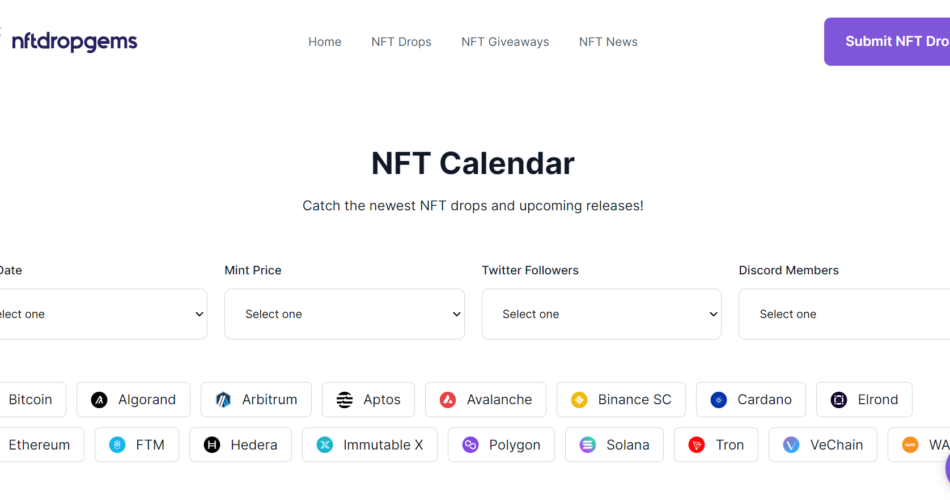Non-Fungible Tokens (NFTs) have emerged as a groundbreaking concept in the dynamic world of digital art and cryptocurrency. These unique digital assets have revolutionized the way we perceive and value art, introducing a new level of exhilaration and opportunity in the crypto sphere. An essential tool that has become integral in this landscape is the NFT drops calendar. This comprehensive guide will explore the significance of NFT drops calendars, their functioning, and how you can utilize them to your advantage.
Table of Contents
Understanding NFT Drops
What is an NFT Drop?
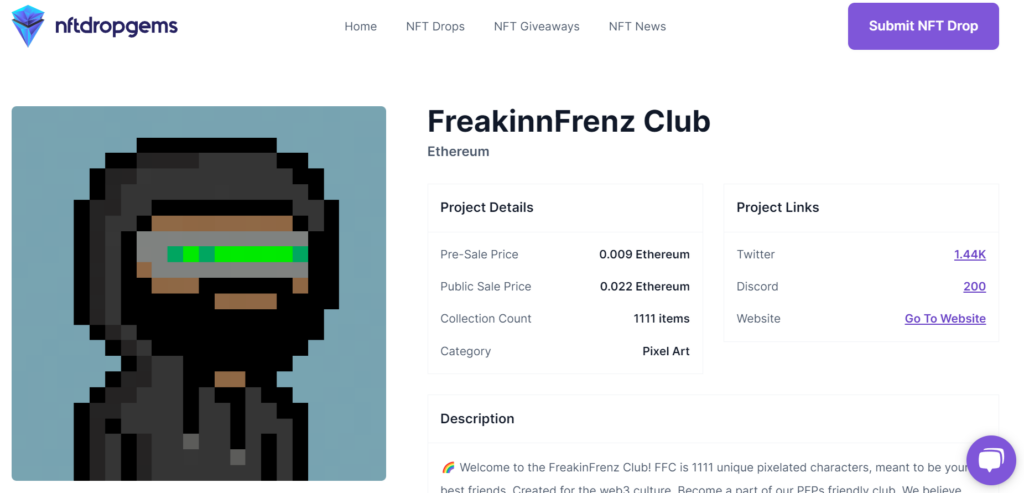
An NFT drop is a significant event in the world of digital art and cryptocurrency. It refers to the scheduled release or “drop” of a new collection of Non-Fungible Tokens (NFTs). These tokens are unique digital assets that are stored on a blockchain, the same technology underlying cryptocurrencies like Bitcoin and Ethereum.
Each NFT is distinct and cannot be replaced with something else, which is what makes them “non-fungible”. They can represent a wide range of unique items or assets, from digital art and music to virtual real estate in digital worlds.
In an NFT drop, creators or artists release a series or collection of NFTs, often related to a specific theme or concept. This could be a series of digital artworks, a collection of music tracks, virtual fashion items, or any other form of unique digital asset. These drops are usually announced in advance and take place on specific platforms that support NFT transactions.
NFT drops are often highly anticipated events in the crypto community. This is because they offer the opportunity for collectors and investors to acquire these unique digital assets, often directly from the artist or creator. Given the unique nature of each NFT and the limited quantity in each drop, these events can be competitive, with high demand leading to NFTs selling out quickly.
In summary, an NFT drop is a scheduled event where a new collection of unique digital assets is released for purchase. It’s a significant event in the NFT space, offering opportunities for collectors, investors, and art enthusiasts to acquire unique pieces of digital art or other forms of unique digital assets.
The Significance of NFT Drops
NFT drops are pivotal events in the crypto sphere. They not only provide opportunities for collectors to acquire unique digital assets but also hold immense significance in the digital art and cryptocurrency world for several reasons:
Opportunity for Artists and Creators
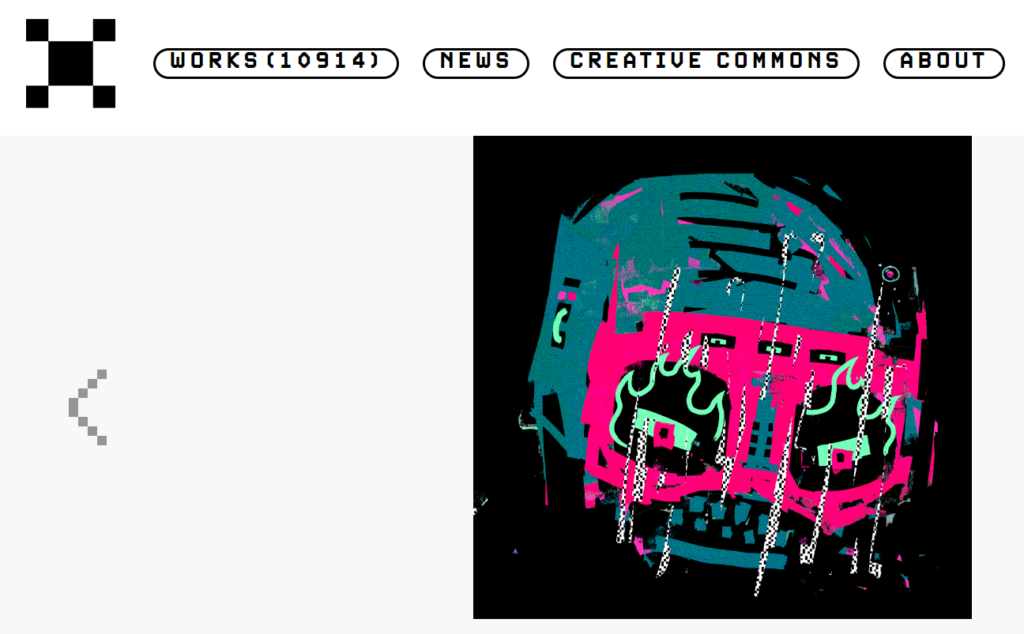
NFT drops provide a unique platform for artists and creators to monetize their work in ways that were not possible before. Artists can sell their work directly to collectors without the need for intermediaries, such as galleries or auction houses. This not only allows artists to retain a greater portion of the profits from the sale of their work, but it also provides them with a global platform to showcase their creations.
Ownership and Provenance

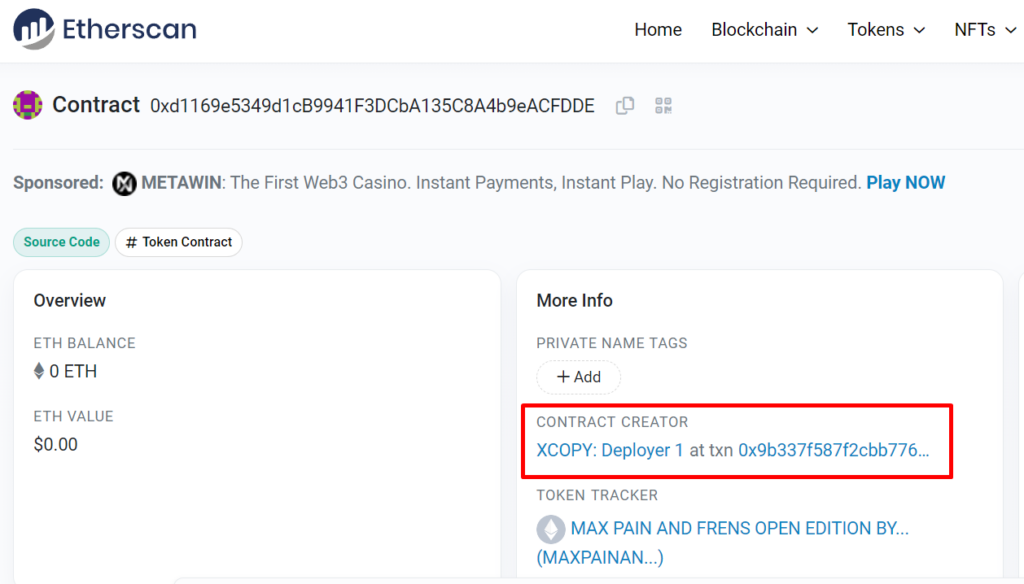
NFTs provide proof of ownership and provenance, which is a record of the ownership history of the asset. This is particularly significant in the art world, where the value of a piece can greatly increase if its provenance is well-documented and verified. When an NFT is purchased during a drop, the transaction is recorded on the blockchain, providing indisputable proof of ownership.
Investment Opportunities
For collectors and investors, NFT drops present opportunities to acquire unique digital assets that could appreciate in value over time. The limited nature of these drops often creates high demand, which can lead to an increase in the value of the NFTs. Some NFTs purchased during drops have later resold for significantly higher prices.
Community Engagement
NFT drops often foster a sense of community among fans and collectors. Many artists and creators use drops as a way to engage with their audience, offering exclusive content or experiences to those who purchase their NFTs. This can create a more interactive and engaging experience for fans, beyond what traditional art sales offer.
Innovation and Creativity
Finally, NFT drops are pushing the boundaries of innovation and creativity in the digital space. They are encouraging artists and creators to think outside the box and explore new ways of creating and presenting their work. This is leading to the emergence of new forms of art and creative expression.
How Do NFT Drops Function?
NFT drops function through a series of steps that involve both the creators of the NFTs and the potential buyers or collectors. Here’s a general overview of how they typically work:
Announcement
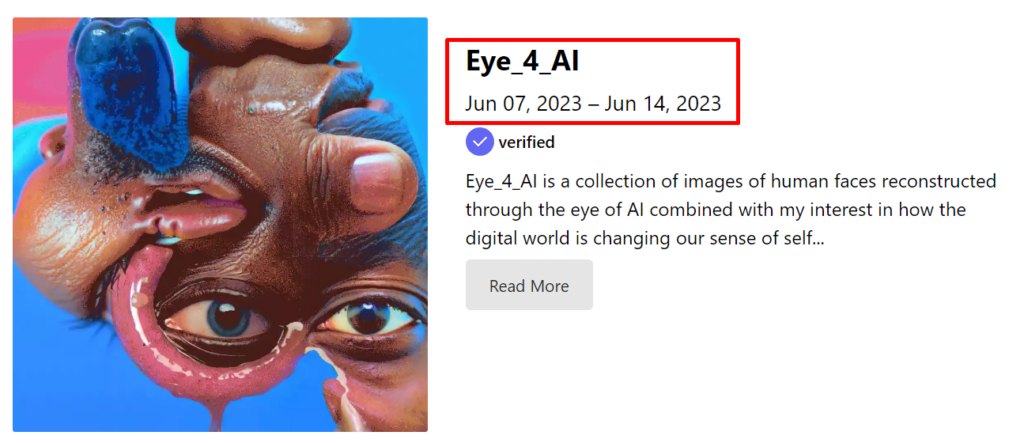
First, the creator or artist announces the upcoming NFT drop. This announcement usually includes details such as the date and time of the drop, the platform where it will take place, the number of NFTs that will be available, and the price for each NFT. The announcement is usually made on the artist’s social media platforms, on the platform where the drop will occur, or through a dedicated mailing list.
Creation
The artist or creator then works on creating the NFTs that will be part of the drop. This could involve creating digital art, music, or any other form of digital content. Once the content is created, it is tokenized, meaning it is turned into an NFT on the blockchain. This process involves linking the digital content to a unique token on the blockchain that will represent the content and prove its authenticity and ownership.
Drop
At the specified date and time, the NFTs are made available for purchase on the chosen platform. This is the actual “drop”. Depending on the platform and the nature of the drop, this could involve a simple listing where buyers can purchase the NFTs at a fixed price, or it could involve an auction where buyers bid on the NFTs.
Purchase
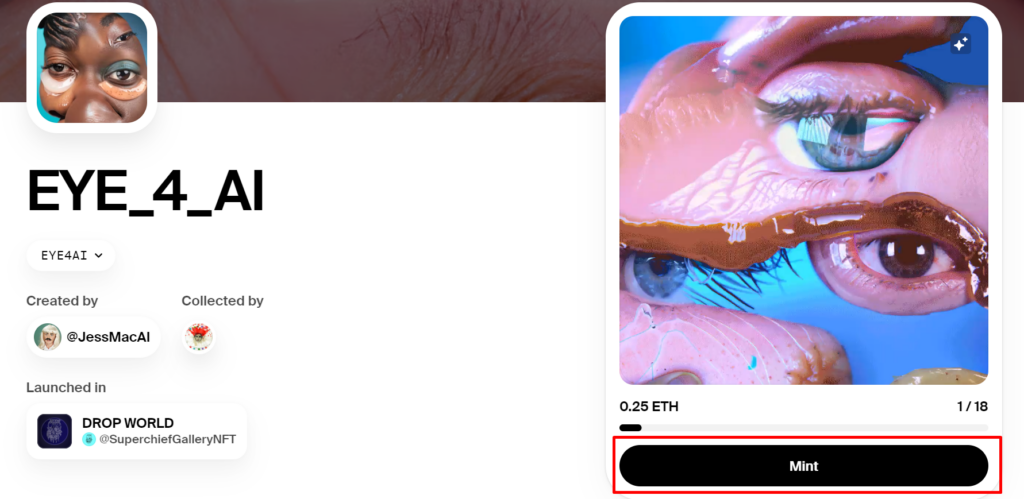
Interested buyers who have been waiting for the drop can now attempt to purchase the NFTs. Given the high demand and limited supply that is common with many NFT drops, this can sometimes involve a bit of luck and quick action. Once a buyer successfully purchases an NFT, the ownership of the token is transferred to them, and this transaction is recorded on the blockchain.
After the Drop
After the drop, the purchased NFTs can be held, resold, or displayed by the owners. Some artists or platforms may also offer additional benefits or access to the owners of these NFTs, such as exclusive content, physical merchandise, or experiences.
In summary, NFT drops function through a process of announcement, creation, drop, and purchase. They provide a unique opportunity for artists to sell their work and for buyers to acquire unique digital assets.
The Role of NFT Drops Calendars
What is an NFT Drops Calendar?
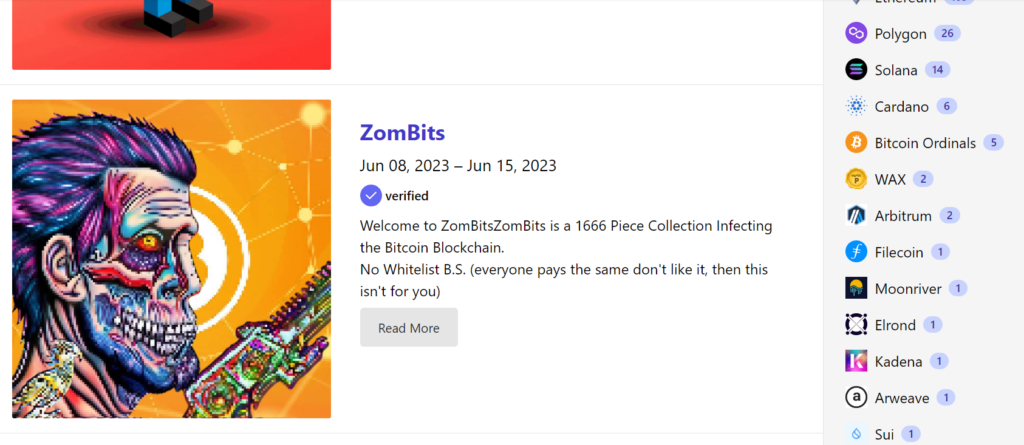
An NFT Drops Calendar is a tool or platform that provides information about upcoming NFT drops. Given the fast-paced and dynamic nature of the NFT market, these calendars are essential for collectors, investors, and enthusiasts who want to stay updated about new releases.
Here’s what an NFT Drops Calendar typically includes:
Schedule of Upcoming Drops
The primary function of an NFT Drop Calendar is to list the schedule of upcoming NFT drops. This includes the date and time of each drop. Since NFT drops can happen across different time zones, many calendars also provide a feature to convert the drop time to the user’s local time zone.
Details about the Drops
In addition to the schedule, the calendar also provides details about each drop. This can include information about the artist or creator, the platform on which the drop will occur, the type of NFTs being released (such as digital art, music, virtual real estate, etc.), and the total number of NFTs available in the drop.
Links and Notifications
Many NFT Drops Calendars also provide direct links to the platform where the drop will occur, making it easier for users to participate in the drop. Some calendars also offer notification features, where users can set reminders for upcoming drops they are interested in.
In essence, an NFT Drops Calendar is a comprehensive guide to upcoming NFT releases. It helps users navigate the bustling NFT market, ensuring they don’t miss out on opportunities to acquire new and unique digital assets.
Why are NFT Drop Calendars Significant?
NFT Drop Calendars hold significant importance in the rapidly evolving NFT space for several reasons:
Staying Updated
The world of NFTs is fast-paced and constantly changing. New drops happen frequently and often without much notice. NFT Drop Calendars help collectors, investors, and enthusiasts stay updated with the latest and upcoming drops, ensuring they don’t miss out on potential opportunities.
Planning and Preparation
Knowing when a drop is going to happen allows collectors and investors to plan and prepare. This could involve setting aside funds for the purchase, researching the artist or the collection, or even strategizing on how to secure a purchase given the high demand and competition during popular drops.
Time Management
NFT drops often happen at specific times and can sell out within minutes or even seconds. By knowing the exact time of a drop, collectors can ensure they are available and ready to participate.
Discovering New Artists and Collections
NFT Drop Calendars often feature a wide range of drops from various artists and creators. This can help collectors discover new artists and collections that they might not have come across otherwise.
Making Informed Decisions
By providing details about the drop, including information about the artist, the platform, and the type of NFTs, calendars help collectors and investors make informed decisions. This information can be crucial in assessing the potential value and appeal of the NFTs being dropped.
In conclusion, NFT Drop Calendars play a crucial role in the NFT ecosystem. They help collectors and investors navigate the dynamic and fast-paced world of NFTs, making it easier for them to participate in drops and expand their collections.
How to Utilize an NFT Drops Calendar?
Using an NFT drops calendar is simple. Regularly check the calendar for updates on upcoming drops. Some calendars also offer features like notifications and reminders to help you stay ahead in the game.
How to Maximize the Use of NFT Drops Calendars
Maximizing the use of NFT Drops Calendars involves a combination of strategic planning, regular monitoring, and informed decision-making. Here are some tips on how to make the most out of these calendars:
Regular Monitoring
The first step to maximizing the use of an NFT Drops Calendar is to check it regularly. New drops are added frequently, and some may be announced with little notice. By checking the calendar daily, you can stay updated with the latest and upcoming drops.
Set Reminders

Most NFT Drops Calendars allow you to set reminders for upcoming drops. This can be particularly useful for drops that you are highly interested in. By setting a reminder, you can ensure that you are ready and available at the time of the drop.
Research
Use the information provided in the calendar to research the artist and the collection before the drop. Look into the artist’s previous work, their reputation, and the potential value of their NFTs. This can help you make an informed decision about whether to participate in the drop.
Plan Your Budget
Knowing the date and time of upcoming drops can help you plan your budget accordingly. If there are several drops happening around the same time, you may need to decide which ones you want to prioritize.
Use Multiple Calendars
Different calendars may list different drops, so it can be beneficial to use more than one calendar. This can help you ensure that you don’t miss out on any potential opportunities.
Engage with the Community
Many NFT Drops Calendars have associated online communities, such as forums or social media groups. Engaging with these communities can provide additional insights and information about upcoming drops.
In conclusion, maximizing the use of NFT Drops Calendars involves staying updated, doing your research, planning your budget, using multiple calendars, and engaging with the community. By following these steps, you can enhance your chances of securing valuable NFTs during drops.
Submit NFT Drop
Submitting an NFT drop is a crucial step for artists and creators looking to release their work into the digital marketplace. This process involves listing the upcoming release on an NFT Drops Calendar, which serves as a public announcement and invitation to potential buyers.
To submit an NFT drop, the creator typically needs to provide details about the drop, including the date and time, the platform where it will take place, a description of the NFTs being released, and any other relevant information. This submission is then reviewed and, if approved, added to the calendar. By submitting their NFT drop, creators can reach a wider audience, generate anticipation for their release, and ultimately increase their chances of a successful sale. It’s an essential part of the NFT creation process, helping to bridge the gap between creators and collectors in the burgeoning NFT marketplace.
If you want to submit NFT drop, go to any NFT website with such an option, like https://nftdropgems.com/, and click on the button.
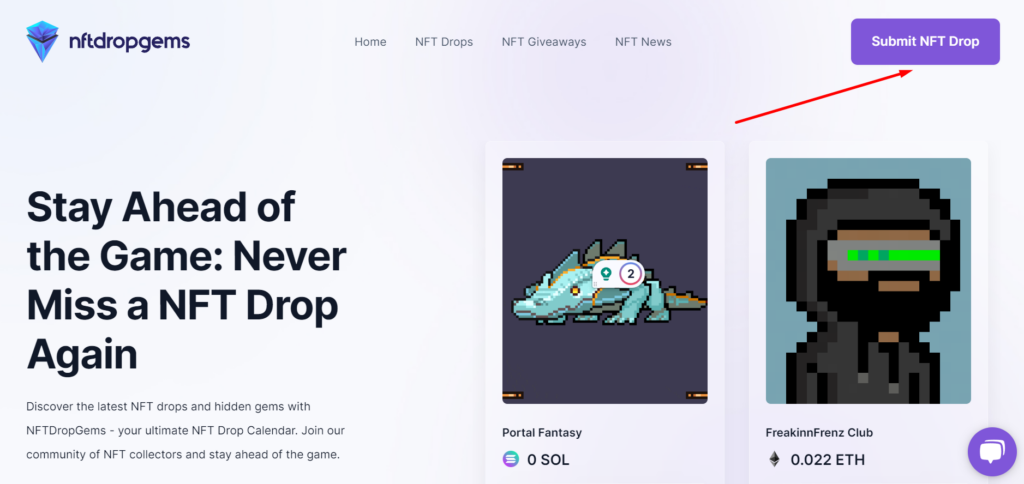
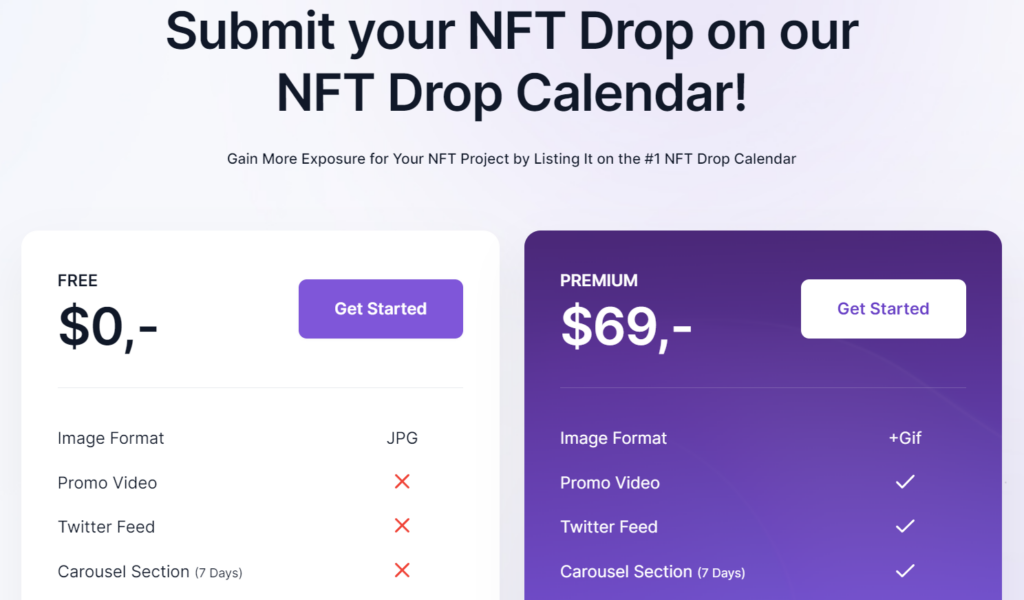
Case Studies of Successful NFT Investments
Case studies of successful NFT investments provide valuable insights into the strategies and decision-making processes that can lead to significant returns in the NFT market. Here are a few examples:
Beeple’s “Everydays: The First 5000 Days”
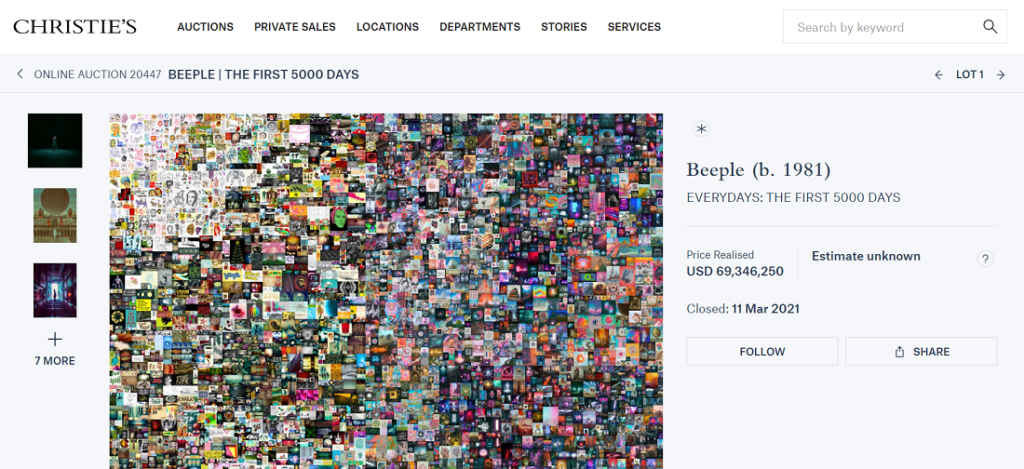
One of the most notable examples of a successful NFT investment is the sale of Beeple’s “Everydays: The First 5000 Days“. This piece of digital art was sold as an NFT at Christie’s auction house for a staggering $69 million. The buyer was Metakovan, the founder of Metapurse, the largest NFT fund in the world. This investment not only yielded a significant financial return but also brought immense attention to the NFT space.
CryptoPunk #7804

CryptoPunks are one of the earliest examples of NFTs, created by software developers Matt Hall and John Watkinson. These 10,000 unique, pixelated characters have become highly sought after. In March 2021, CryptoPunk #7804 was sold for 4200 ETH, equivalent to about $7.6 million at the time of sale. The buyer, an investor known as Peruggia, had previously purchased the punk for 12 ETH in 2017, representing a substantial return on investment.
NBA Top Shot Moments
NBA Top Shot, a blockchain-based platform that allows fans to buy, sell and trade officially licensed NBA collectible highlights, has seen some remarkable sales. One of the most notable was a LeBron James highlight, which sold for $208,000. The original purchaser bought the moment for around $100, making it a highly successful investment.
These case studies illustrate the potential for high returns in the NFT market. However, it’s important to note that the market can be volatile and unpredictable, and not all investments will necessarily yield such significant returns. As with any investment, it’s crucial to do thorough research and understand the risks involved.
Future of NFT Drop Calendars
The future of NFT Drops Calendars is likely to be influenced by the overall trajectory of the NFT market, which is currently experiencing rapid growth and innovation. Here are a few potential developments we might see:
Increased Integration with Other Platforms
As the NFT market grows, we can expect to see NFT Drops Calendars becoming more integrated with other platforms. This could include direct integration with NFT marketplaces, social media platforms, and artist websites, making it easier for users to participate in drops directly from the calendar.
More Advanced Features
NFT Drops Calendars may also develop more advanced features to help users navigate the increasingly complex NFT landscape. This could include personalized recommendations based on users’ past behavior, advanced search and filtering options, and more detailed information about each drop.
Broader Coverage
Currently, most NFT Drops Calendars focus primarily on art and collectibles. However, as the range of NFTs continues to expand into areas like virtual real estate, music, and even intellectual property rights, we can expect calendars to broaden their coverage to include these types of drops as well.
Greater Community Engagement
NFT Drops Calendars could also become platforms for greater community engagement. This could involve features like user reviews and ratings of drops, discussion forums, and tools for sharing and promoting drops within the community.
Adoption by Mainstream Audiences
As NFTs become more mainstream, we can expect to see NFT Drops Calendars being used by a wider audience. This could include not only dedicated collectors and investors, but also casual art enthusiasts, fans of specific artists or brands, and even people who are just curious about the NFT phenomenon.
The future of NFT Drop Calendars looks promising, with potential for increased integration, advanced features, broader coverage, greater community engagement, and wider adoption. However, like any emerging technology, their evolution will depend on a variety of factors, including technological advancements, market trends, and user needs and behaviors.
Conclusion
NFT drop calendars are an indispensable tool for anyone interested in the world of NFTs. They provide valuable information that can help you stay ahead in the game and maximize your chances of acquiring unique digital assets. So, keep an eye on those calendars, and happy collecting!
